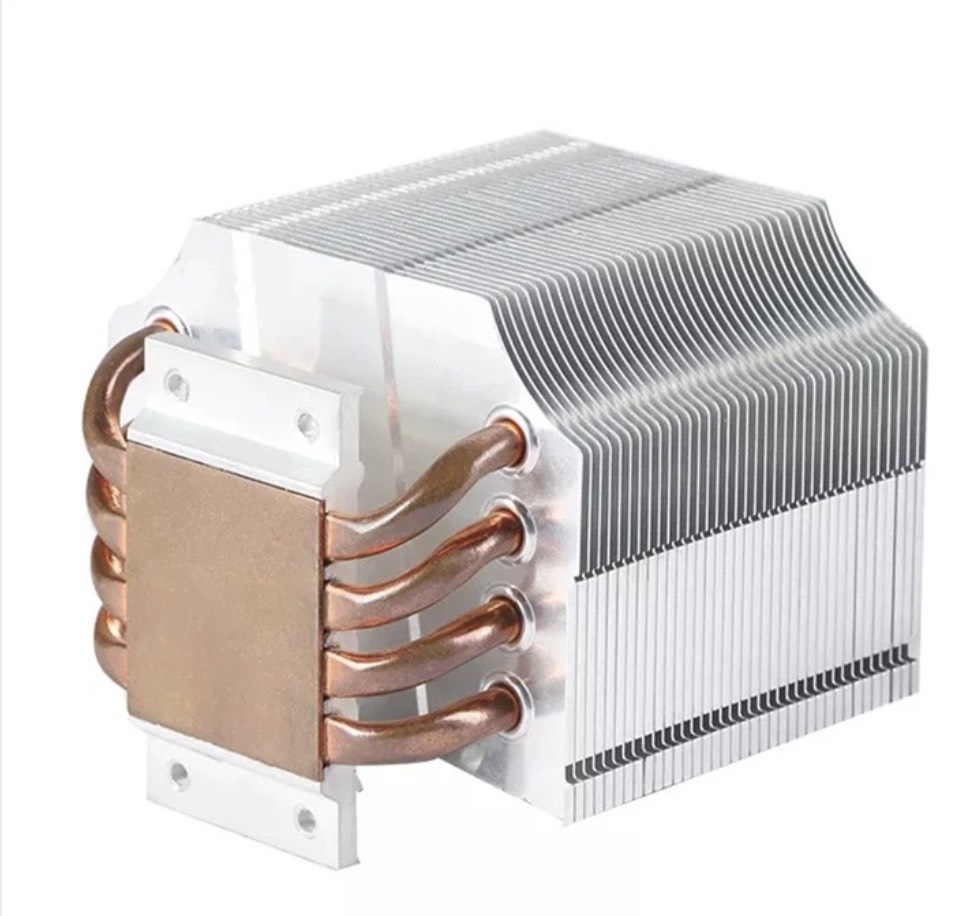In the realm of electronics and thermal management, the term "heat sink" holds a significant place. As devices become more compact and powerful, the need for efficient heat dissipation becomes crucial. This article delves into the meaning, functionality, and importance of heat sinks in modern technology, providing insights into their various types and applications.
A heat sink is a passive heat exchanger that absorbs heat generated by electronic or mechanical devices and dissipates it into the surrounding environment. Its primary purpose is to maintain an optimal operating temperature for components, thereby preventing overheating and potential failure. Heat sinks are essential in various industries, including consumer electronics, automotive, aerospace, and more.

Heat sinks work on the principle of thermal conduction, where heat is transferred from a hotter object to a cooler one. The device usually consists of a thermally conductive material, such as aluminum or copper, which efficiently absorbs heat from the heat-generating component. This absorbed heat is then spread across the heat sink’s surface area and dissipated into the air through convection.
To enhance the dissipation process, heat sinks often feature fins or other structures that increase surface area, promoting better airflow and cooling. The efficiency of a heat sink is measured by its thermal resistance, which is the measure of its ability to transfer heat from the source to the environment.
There are several types of heat sinks, each designed to meet specific cooling requirements and applications:
Active Heat Sinks: These combine passive heat sinks with additional cooling mechanisms like fans or liquid cooling systems. The added components enhance the cooling performance by forcing more air over the heat sink's surface or by using liquids to carry heat away from the source more efficiently.
Passive Heat Sinks: These rely solely on natural convection and conduction to dissipate heat. They are commonly used in devices where noise and mechanical reliability are critical concerns, such as in some consumer electronics or medical equipment.
Bonded-Fin Heat Sinks: These consist of fins bonded to a base plate, typically used in high-performance applications. The bonding process, often involving a thermally conductive adhesive, allows for more precise control over fin spacing and height, optimizing heat dissipation.
Extruded Heat Sinks: Made by extruding aluminum or copper, these are among the most common types of heat sinks. The extrusion process allows for the creation of complex shapes that maximize surface area and enhance cooling efficiency.
Stamped Heat Sinks: These are produced by stamping or punching metal sheets into desired shapes. While less expensive than extruded heat sinks, stamped versions are typically used in low-power applications due to their lower thermal conductivity.
Heat sinks are ubiquitous in modern technology, with applications ranging from everyday consumer electronics to specialized industrial equipment. In computers, for instance, they are used to cool CPUs, GPUs, and power supply units, ensuring reliable performance and longevity. In the automotive industry, heat sinks are critical in managing the thermal loads of components like power electronics and lighting systems.
In telecommunications, heat sinks are vital in cooling base stations and other infrastructure, maintaining the integrity and performance of network operations. Additionally, they are crucial in renewable energy systems, particularly in cooling the power electronics used in solar inverters and wind turbines.
The efficiency of a heat sink is largely determined by its material and design. Copper, with its superior thermal conductivity, is often preferred in high-performance applications. However, aluminum, being lighter and more cost-effective, is widely used in consumer products. The design, including the shape, size, and fin arrangement, also plays a crucial role in enhancing heat dissipation.
Advancements in materials science and manufacturing techniques, such as additive manufacturing, are pushing the boundaries of heat sink design. These innovations enable the creation of complex geometries that were previously impossible, further improving the cooling capabilities of heat sinks.
As electronic devices continue to evolve, the demand for more efficient and compact heat sinks will grow. Emerging technologies such as gallium nitride (GaN) power devices, which operate at higher temperatures than traditional silicon devices, will require advanced thermal management solutions.
In addition, the increasing emphasis on sustainability is driving the development of heat sinks made from eco-friendly materials and designs that optimize energy efficiency. The integration of smart technologies, such as sensors and control systems, is also anticipated, allowing for real-time monitoring and adjustment of cooling performance.
Heat sinks are indispensable components in the world of electronics and thermal management. Understanding their function, types, and applications is crucial for anyone involved in designing or working with electronic devices. As technology advances, the innovation and optimization of heat sinks will continue to play a critical role in enabling the next generation of high-performance, reliable, and energy-efficient systems.
By focusing on these aspects, this article aims to provide a comprehensive overview of heat sinks, highlighting their significance in modern technology and the ongoing advancements in their design and application.
By continuing to use the site you agree to our privacy policy Terms and Conditions.